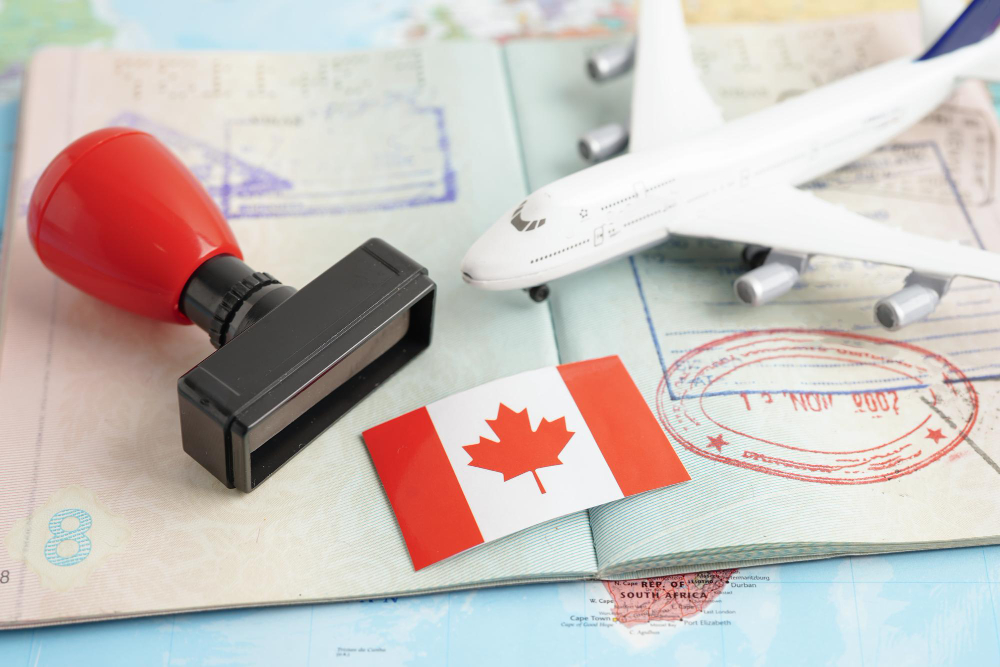
Canada Immigration Categories 2026: Who Will Benefit from the New Express Entry Categories?
Canada’s Express Entry system has long been the fastest and most popular pathway for skilled workers to obtain permanent residency. Every now and then, Immigration, Refugees and Citizenship Canada (IRCC) adjusts categories and selection strategies to match Canada’s labour market needs. In 2026, major changes are coming. The Immigration, Refugees and Citizenship Canada (IRCC) has proposed three new occupational categories to make the program more responsive to the country’s labour market and national priorities. The three new Express Entry occupational categories will open doors for highly skilled professionals in senior management, scientific research, and military services.
Public consultation on these changes is open until September 3, 2025, and the final rules will be rolled out in 2026. At the same time, Canada plans to welcome about 380,000 permanent residents in 2026, slightly fewer than in previous years, but with a stronger focus on category-based selection.
Alongside the new additions, popular categories like STEM, healthcare, skilled trades, education, agriculture, and Francophone immigration are expected to continue or expand.
So, what do these changes mean for candidates in 2026? Let’s break it down.
Understanding the New Express Entry Categories for 2026
In recent years, Canada has seen increased demand for immigration, with applicants far outnumbering available permanent residence (PR) spots. At the same time, employers across sectors have reported labour shortages in specialised roles.
The Express Entry occupational categories are essentially specialised pools within the system. Instead of inviting candidates solely based on top CRS scores, IRCC can hold targeted draws for certain professions. The system already uses category-based draws to invite candidates in priority sectors such as healthcare, STEM, and trades. With Canada Express Entry 2026, this list will expand to include three new groups: senior managers, scientists/researchers, and military personnel.
These Express Entry occupational categories are designed to tackle skill shortages in critical areas while boosting economic growth, innovation, and national security.
Why New Categories Are Being Added
Canada is not just facing general labour shortages; it needs highly specialised professionals to strengthen its economy and security. According to IRCC, the new categories are meant to:
- Boost Economic Growth
Canada’s economy is evolving rapidly. Beyond the need for healthcare and trades, there is a growing requirement for executive leadership to manage global operations, scientists to drive innovation, and military professionals to strengthen national defence. - To Meet Labour Market Needs
Canada faces shortages in leadership roles, scientific research, and defence, which are essential for economic growth and national security. Canada wants to remain competitive by making PR pathways more appealing to both labour market and top-tier candidates. - Strengthen Canada’s Future Readiness
These categories are about future-proofing the workforce. By attracting senior managers, researchers, and defence professionals, Canada is preparing for challenges like global competition, technological change, and national security risks over the next decade.
These updates reflect broader Canada immigration 2026 updates, aligning immigration policies with national security, economic stability, and technological advancement.
New Express Entry Categories – Who Qualifies?
Senior Managers’ Immigration to Canada
A new Leadership Category will open positions for senior managers and executives (classified under Major Group 00 of Canada’s NOC system). Canada wants experienced leaders who can run businesses, mentor teams, and bring international expertise. Executives can play a big role in helping small and medium enterprises expand globally.
For applicants, this means senior-level experience is finally being directly recognised in immigration policy.
Eligible roles may include:
- Chief Executive Officers (CEOs)
- Chief Financial Officers (CFOs)
- Senior government managers
- Senior managers in trade, broadcasting, communications, construction, and utilities
This stream provides an easy PR option for leadership professionals, making it easier for global executives to contribute to Canada’s economic strategy.
Scientists, Researchers, and Innovation Specialists
Canada is already leading in AI, clean technology, and biotechnology. But to maintain this edge, it needs to attract more top talent. The Research & Innovation Category will target professionals driving discovery and technology. Eligible applicants are likely to include:
- Researchers in natural sciences and engineering
- Healthcare and biomedical scientists
- Technology and AI specialists
- Innovation managers in R&D
By opening doors for global researchers, Canada is positioning itself as a hub for STEM excellence and innovation. This is a clear boost for professionals in Canada Express Entry’s new occupational categories 2026.
Specialised Pathways for Military Personnel
For the first time, a National Security & Defence Category is being proposed. This move highlights Canada’s recognition of military expertise as valuable civilian skills, such as leadership, crisis management, and technical training. It also aims to strengthen bilateral ties with countries like India, the Philippines, and others that have a strong military background.
This pathway will recognise the skills of:
- Military officers
- Defence specialists
- Allied force professionals with transferable skills
This category highlights Canada’s aim to boost security readiness, while offering skilled military personnel a clear immigration pathway.
Application Process & Selection Criteria for Express Entry 2026
Category-Based Selection
So, how does category-based selection work in Express Entry? There’s a process to go through if you want to apply under any of these categories:
Here’s how category-based draws work in Express Entry:
- Profile Creation: Applicants create an Express Entry profile and enter the pool.
- Eligibility Screening: Candidates must meet minimum criteria (language tests, education credentials, work experience).
- Category Matching: If their occupation falls under a targeted category (e.g., senior managers), they become eligible for category-specific draws.
- Invitation to Apply (ITA): IRCC issues ITAs to candidates with qualifying CRS scores within that category.
- Permanent Residency Application: Once invited, applicants have 60 days to submit documents for PR.
If you are someone from the right occupational category, this could significantly improve your chances.
Timeline: When Will IRCC Announce Final 2026 Categories?
- Public consultation ends: September 3, 2025
- IRCC final announcement: Late 2025
- Implementation: January 2026 (expected)
Until then, candidates should prepare their documentation and monitor Canada immigration 2026 updates closely.
Preparing Your Application – Tips for New and Existing Categories
Here’s a quick Express Entry preparation checklist for 2026:
- Educational Credential Assessment (ECA): Mandatory for foreign degrees.
- Language Tests: IELTS or CELPIP for English, TEF/TCF for French.
- Proof of Work Experience: Letters from employers verifying duties, position, and experience.
- Proof of Funds: Bank statements showing settlement funds.
- Category-Specific Proofs:
- Executives: Letters confirming leadership role.
- Researchers: Publications, research projects, patents.
- Military: Service records, official discharge documents.
Staying updated and proactive can help you secure an ITA under Canada Express Entry 2026.
Profile Optimisation Strategies
- Improve CRS by retaking language tests for higher scores.
- Apply for Provincial Nominee Programs (PNPs), which add 600 points to CRS.
- Highlight specialised skills in your profile (e.g., executive decision-making, scientific research impact).
Latest News & Trends Impacting Canada Express Entry 2026
- Immigration Levels Plan for 2026: 380,000 PR Admission- Canada plans to admit 380,000 permanent residents in 2026, slightly fewer than in recent years. The focus is shifting from record numbers to more targeted admissions aligned with labour market priorities.
- India Remains the Top Source Country- India continues to lead as the largest source of PRs. With strong representation in STEM, executive roles, and defence, Indian applicants are expected to benefit from the new categories.
- STEM and Healthcare Stay a Priority- Healthcare workers and STEM professionals will remain in demand. Doctors, nurses, engineers, and tech experts can expect continued category-based draws in 2026.
- Francophone Immigration Expansion- Canada is also expanding draws for French-speaking candidates, supporting bilingualism goals and growing francophone communities outside Quebec.
Conclusion
The upcoming Canada Express Entry 2026 changes show a significant reset of the immigration system. With new categories for senior managers, scientists, and military personnel, Canada is clearly prioritising leadership, innovation, and national security alongside its traditional labour market needs.
For candidates, this means more tailored pathways and better chances if you fall into a high-demand category. Whether you’re an executive, a researcher, or a military professional, 2026 could be the year to make your move.
If you belong to any of the priority categories, it’s the right time to prepare.
Get personalised guidance for your Canada PR journey with VisaAxis Immigration Experts.
Our team will help you with Express Entry updates, optimise your profile, and maximise your chances of moving to Canada in 2026.
Frequently Asked Questions – Canada Express Entry 2026
Q1: What are the new occupational categories for Canada Express Entry in 2026?
Canada will introduce three new categories in 2026 under Express Entry: senior managers (executives and business leaders), scientists and researchers across STEM and innovation fields, and military professionals with defence expertise. These additions aim to attract leadership talent, boost innovation, and strengthen national security.
Q2: Who will benefit from Canada’s 2026 Express Entry changes?
The 2026 updates primarily benefit highly skilled candidates in leadership, innovation, and defence. However, applicants in existing priority sectors such as healthcare, STEM, skilled trades, agriculture, and francophone immigration will continue to benefit, as those categories are expected to remain active or expand alongside the new ones.
Q3: How does category-based selection work in Express Entry?
In category-based selection, IRCC conducts targeted draws focusing on specific occupations. Candidates whose profiles match these occupations may receive invitations to apply (ITAs) even if their Comprehensive Ranking System (CRS) score is lower than the general draw cut-offs. This ensures Canada fills priority skill gaps more effectively.
Q4: When will IRCC announce the final 2026 Express Entry categories?
The IRCC is currently seeking public feedback on proposed categories until September 3, 2025. After consultations, the final list of occupational categories for Express Entry 2026 will be confirmed and announced in late 2025, with implementation scheduled to begin in early 2026.
Q5: Can senior managers immigrate to Canada through Express Entry?
Yes. Under the 2026 updates, senior managers and executives can apply through the new Leadership Category, which covers occupations in NOC Major Group 00. This stream recognises the strategic importance of experienced leaders in driving Canada’s economic growth, organisational development, and long-term business competitiveness.
Q6: How can scientists and researchers apply for Canada PR in 2026?
Scientists and researchers will qualify under the new Research & Innovation Category in Express Entry 2026. Eligible applicants may include those in biotechnology, AI, clean energy, or advanced STEM research. This pathway helps Canada strengthen global competitiveness by attracting skilled professionals in science, technology, and innovation.
Q7: What is the CRS score requirement for category-based draws in Canada?
As of now, there is no fixed CRS score for category-based draws, as thresholds vary by occupation and demand. However, category-specific draws often set lower CRS cut-offs than general draws. This gives qualified candidates in priority fields a better chance of receiving invitations to apply for permanent residency.



